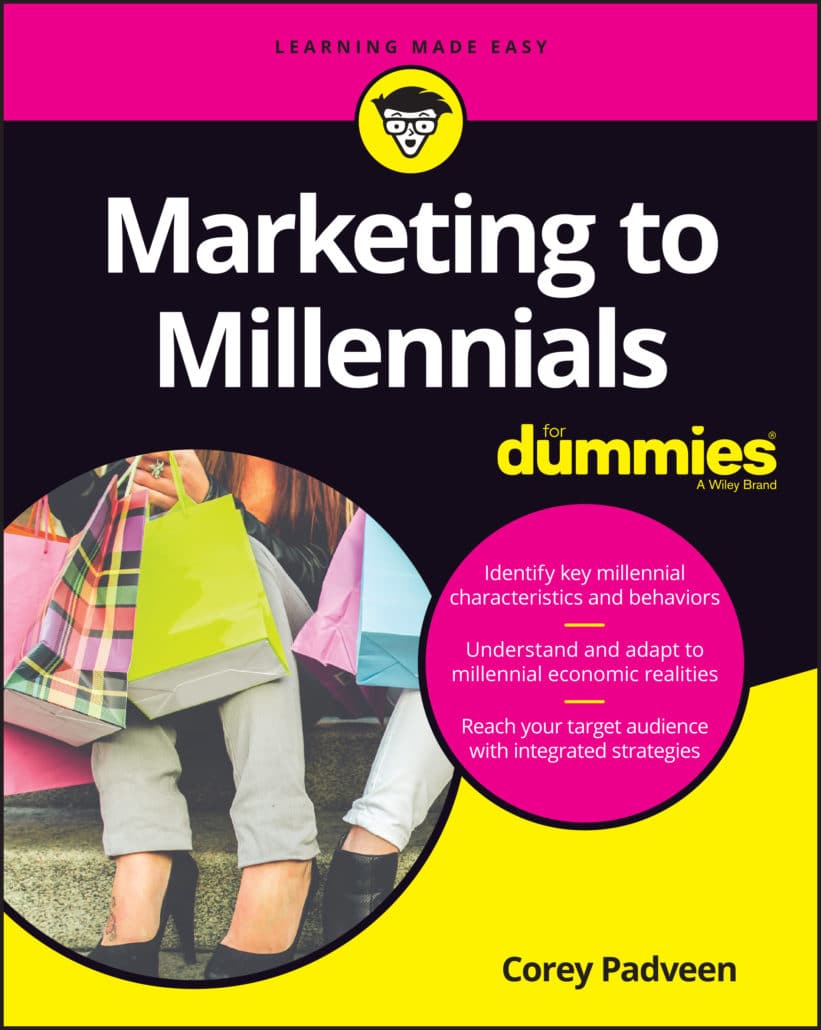Building Millennial Loyalty with Content Strategies (Part 2)
Millennial loyalty is not a myth; with the right content strategies in place, you can build an audience of loyal Millennial consumers with a high lifetime value.
In May, my new book, Marketing to Millennials for Dummies will be available online and in-stores. (You can also pre-order the book today!) While the idea of marketing to Millennials can be more broadly understood as marketing to a modern consumer, there are certain traits that have been established with the Millennial demographic specifically, and have slowly begun to expand to other cohorts. As such, I am publishing a five-part series discussing the strategic use of content in the pursuit of building loyalty with Millennials (and modern consumers, in general). This series will run over the next few weeks as we prepare for the launch of our new website and the book. In this part, we will take a closer look at how marketers can add value to their audience, and how value drives loyalty with Millennials.
Providing Value
Value comes in many forms. In some cases – likely the one most marketers immediately assume when they hear the term ‘value’ – it can mean economic value. Examples of economic value are coupons or specials that might be offered to fans, followers, and subscribers. The value referred to in this particular strategic initiative, however, is somewhat different. When you’re trying to connect with Millennials, you’ll want your content to contain some type of value that stretches beyond a one-off deal or offer. You’ll want there to be a sustainable form of value that keeps your audience coming back.
There are several different types of content that offer this sustainable value. Most of these come in the form of knowledge. If you can educate your audience in some capacity that leaves them with something more (and lasting) that they did not have before, you’re in an excellent position to build those lasting relationships that keep Millennials coming back for more. In terms of the kinds of educational content that Millennials are most often attracted to, you’ll want to consider three types: informational, instructional, and inspirational.
Informational content is rooted in the explanation of theories, concepts, and other brand- or industry-related concepts. When you share informational content, you are providing your audience with the stepping stones needed to become their own experts in a given subject. Let’s say, for example, you’re in the gambling business, and you’re sharing information about the kinds of bets that exist in the casino table game of craps. In order to do this in the most effective way to drive continued traffic, you’ll create content (which can be in virtually any form, be it written, video or audio; though, the latter two are worth more of your effort) on an ongoing basis and share it with your audience on various media.
Creating and sharing this content will lead to continued engagement from your most interested targets. An added benefit to this strategy is the fact that it highlights your own expertise in the field, which is a similar benefit derived from instructional content.
In the case of instructional content, you’re providing value by walking your audience through the necessary steps to taking some sort of action. This could be anything from a simple outline of the steps to signing up for a service or newsletter to something more complex, like a do-it-yourself video that provides viewers with the intricate steps involved in building a car engine. Whatever the case, this is a content strategy that once again showcases your expertise, builds trust with your audience by giving them a form of insider information, and drives continued engagement through the sustainable value of the instructions you’re providing.
Lastly, you have inspirational content. In this particular case, the use of the term inspirational doesn’t relate to motivational phrases, but rather the content is inspirational in terms of the elicited actions. You can inspire your audience to try something new and different, and the best way to do this is to provide tips and tricks that might not be particularly obvious when you share, say, the standard instructions involved in a particular act. Again, this is a content type that drives repeat engagement and provides your audience with a considerable degree of value. Of course, there are those pieces of content that provide economic value, such as a deal or offer, but in the case where you’ll want to build a long-term relationship, which is where brand loyalty lies, the types of content the associated value outlined here are the ones to which you’ll want to pay the closest attention.
When you focus your efforts on providing a sustained, long-term value to your audience, you’ll be in a much better position to build Millennial loyalty. Be sure to keep an eye out next week for the second content strategy I cover regarding the personalization of your content efforts. And don’t forget to pre-order your copy of Marketing to Millennials for Dummies on Amazon today!







